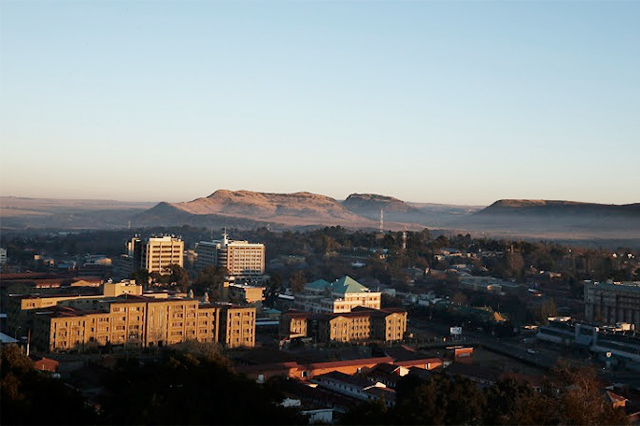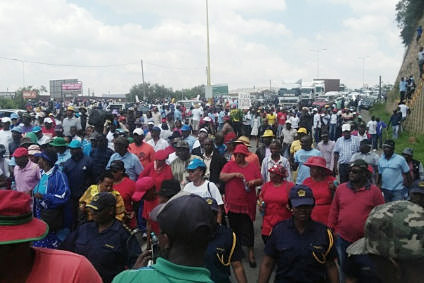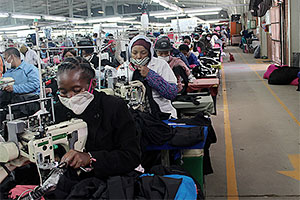Lesotho: Bracing for the post-AGOA period
Next time you pick up sporting gear or a pair of jeans in a US mall, do check the label.
It may have been made in Lesotho, a small, mountainous and land-locked country completely surrounded by South Africa, with a population of around two million.
Lesotho is a beneficiary of the Africa Growth and Opportunity Act (AGOA), which allows over 6,400 products from eligible sub-Saharan African countries to enter the US market duty-free.
The country has made big strides in the garment industry with US exports estimated at US$330 million in 2015, against US$140 million in 2000. Today, according to the Lesotho Textile Exporters Association, about 80 percent of Lesotho’s textile and garment exports go to the US. With 44,000 employees, the garment industry is the country’s largest private sector employer.
There are other ‘Made in Africa’ success stories that have emerged since AGOA was introduced in 2000 and extended by 10 years in September 2015. According to the 2016 AGOA report released by the Office of the United States Trade Representative, non-oil exports to the US under AGOA nearly tripled from US$1.4 billion in 2001 to US$4.1 billion in 2015. Automobiles from South Africa and apparel from Kenya, Lesotho, Mauritius, and Swaziland were the leading exports.
The gains from AGOA are undeniable, despite criticisms that the agreement favours petroleum products and that it excludes some agricultural products in which Africans have a comparative advantage. There have also been concerns that the export of Africa’s agricultural products to the US is made even more difficult by complex health and food safety regulations.
This, however, has not stopped bolder, export-ready, African countries from capturing shares in the US market. In July, for instance, Namibia became the first African country to be eligible to export boneless (not ground) raw beef products to the US.
A key challenge for Africa will be to ensure that its industries that have thrived under AGOA do not collapse, that the thousands of jobs created in the automobile and automobile parts, apparel, fruit and nut, cocoa, footwear, and flower industries are sustained and continue to grow beyond 2025.
This will demand that Africa strengthens its skills base and capacity to compete. Failure to do so could see competitors such as Vietnam erode its growing market share in especially textiles and apparel should the US ratify the Trans-Pacific Partnership Agreement.
The US textile and apparel market is estimated at US$350 billion. Africa, despite its large potential, supplies a paltry one percent of this. A challenge for the continent is to use the next nine years, up to the end of AGOA in 2025, to build competitive industries in the sector. A country that could emerge as a key player is Ethiopia.
A 2015 McKinsey survey of 40 global chief procurement officers in the apparel industry, for the first time named Ethiopia as a possible global sourcing destination. Like with many other African countries, the challenge for Ethiopia is to shift from being the world’s leading sourcing options to becoming a priority.
For responsive countries, AGOA has provided invaluable lessons that Africans can use to stimulate the growth of their export industries and seize market share elsewhere.
It has also helped enhance intra-African trade by enabling producers in different countries to create new value chains that deliver mutual benefit. Botswana, for instance, now exports leather to South Africa where it is processed into upholstery for luxury car exports to the US.
Meanwhile, the African Development Bank will continue to play its part by building infrastructure to improve Africa’s competitiveness in US markets. This will include promotion of regional integration that enhances trade and skills for greater global competitiveness.
Equally important, within Africa is the creation of solutions for export-oriented small and medium enterprises (SMEs) to help bridge the unmet demand for trade finance in Africa, currently estimated at US$120 billion.
Work in this direction is already well underway. Established in February 2013, the Bank’s Trade Finance Program (TFP) has already supported more than 85 domestic banks in 27 African countries, catalysing approximately US$3.4 billion of trade in vital sectors such as agriculture, manufacturing and construction and energy.
More than 60 percent of the transactions supported are on account of SMEs. Furthermore, the Bank’s emphasis on regional value chains in its “Industrialise Africa” strategy recognises the opportunities that anchor industries in one country can provide to industries in neighbouring countries.
African governments are aware of the challenges. At the September 2016 Ministerial AGOA Forum, African trade ministers recognised the urgent need to plan ahead. They committed to the creation of a task force to outline strategies for US-Africa trade and investment relations beyond 2025. This is a good start.
Now, the clock is ticking and the bell signalling the end of AGOA privileges will soon resonate across Africa. We must be ready when it rings.
- The author is director of the NEPAD Regional Integration and Trade Department at the African Development Bank.












